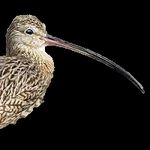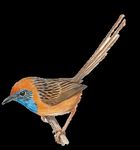BIRDLIFE AUSTRALIA STRATEGY & OPERATING PLAN 2017-2022
←
→
Page content transcription
If your browser does not render page correctly, please read the page content below
Table of Contents 1. Introduction ............................................................................................................1 2. BirdLife Australia’s Strategy .........................................................................2 3. Strategic Direction ..............................................................................................3 4. Bird Conservation Program ...........................................................................4 Appendix A. Theory of Change ................................................................................5 Policy Number: Date:
1. Introduction
“You cannot fly like an eagle
with the wings of a wren”
— William Henry
Hudson
Despite our best efforts,
Australia’s list of
threatened species is
growing, and the number
of birds on the brink of
extinction is a serious
concern. This strategic
plan, therefore, focuses on
improving BirdLife
Australia’s conservation
impact by making sure all
our people and resources
are working together on
our conservation plans and
priorities.
To ensure BirdLife Australia and its partners achieve the best outcome from every conservation
dollar, our resources are invested carefully in programs to save the species which are most in
need of protection.
And because conservation in isolated pockets cannot deliver the change we need, we must work
together, collaborating with the ever-expanding BirdLife Network and other like-minded
partners across Australia — community groups, governments, researchers, land managers, zoos
and other environment organisations.
Although science underpins everything we do, we can no longer rely on simply presenting the
facts to achieve positive change. Any success in bringing about change must now also include
strong advocacy, communications and campaigns.
We can stop extinctions by informing and mobilising the many people who support our crucial
conservation work by contributing time and money. The only way we can engage and inspire
more people to partner with BirdLife Australia is to ensure our communications, engagement
products and channels — including our membership and fundraising products — continue to
evolve.
Paul Sullivan,
Chief Executive
12. BirdLife Australia’s Strategy
This updated Strategy and five-year
Operating Plan sets out an inspiring
and ambitious vision to protect
endangered birds and nature. It is
intended as a guide for BirdLife
Australia’s branches, groups,
reserves and observatories and
delivery partners.
Our Vision
Native birds are protected, valued and enjoyed by all Australians …
Our Mission
… by informing and leading action to ensure Australian birds and their
habitat flourish1
Our Promise
Standing together to stop extinctions
Our Goals
• Improve • Promote the • Build a strong
conservation appreciation nature
outcomes for and organisation to
native birds understanding speak for native birds
of native birds
and their threats
Our Values
Passion Excellence Leadership Collaboration Integrity Impact
We bring Science and We We embrace Our success We think
people knowledge empower diversity and is based on globally, lead
together is at the and inspire work in experience, nationally and
around a centre of people to partnership honesty, act locally
love of everything lead with with mutual trust and
nature we do courage and respect fairness
purpose
1
BirdLife Australia mapped 'how change occurs' by identifying the outcomes, objectives and activities required to deliver its vision and in what order
(see Appendix A).
23. Strategic Direction
BirdLife Australia is a bird conservation organisation whose actions are informed by good science.
We are governed by a skills-based and member-elected Board and our work is funded by a growing
philanthropic community of nature- and bird lovers. We use the following series of strategic
priorities and principles to design and resource our conservation programs.
Strategic Priorities
These priorities guide us in allocating people and resources to our programs:
• Conservation Action Plans guide how we resource our conservation programs
• Key Biodiversity Areas — we’re global leaders on their local implementation
• State of Australia’s Birds guides us in managing birds and their habitats effectively
• data-driven engagement expands our supporter base and mobilises support for our work
• communication products and channels evolve to engage a broader audience
• member and donor products focus on shaping our future and financing our conservation
programs
• capacity is invested in:
a. human capital: training and developing our people
b. Information Technology: systems to meet our business needs
c. communities in the Pacific region2
Strategic Principles
These principles underpin how BirdLife Australia implements its strategy:
• Science determines the priorities of our programs; social and political opportunities for
change also play a role
• our people, resources and partners drive impact together
• communications and campaigns raise our public profile
• engagement deepens supporter relationships
• tangible conservation outcomes inspire people to support our work
• reduced operational complexity increases our capacity and reduces our costs
Lord Howe Island Key Biodiversity Area
2
BirdLife Australia is a partner in the world’s largest conservation partnership, BirdLife International, and is committed to playing a proactive role with
partners in the Pacific Region.
34. Bird Conservation Program
"Wildlife has the power to recover and people have the power to change. What
happens next depends on us"
— David Attenborough
Preventing
Woodland Birds Shorebirds KBAs
Extinctions
SE Beach-
WA Black- Mallee Migratory National Emergency
Woodland nesting
Cockatoos
Birds Birds Shorebirds Policy Room
Birds
BirdLife Australia is facilitating the collaborative implementation of Conservation Action Plans
(CAP) (or alternatives) for its approved programs (above). A CAP focuses our attention on
threats, what needs to be done, who will do the work, how it should be delivered, and — after
we’ve taken action — evaluating the results to learn from them and guide future management.
Flagship species for each program (for example, the Regent Honeyeater for South-eastern
Woodland Birds) represent the conservation efforts for multiple species and eco-systems. Each
CAP will bring together and prioritise our advocacy, fieldwork and engagement resources.
Science and research guides our bird conservation priorities and actions.
BirdLife Australia inspires, trains and mentors volunteers so they can conduct structured bird
surveys, which guides future management of birds and habitats. Peer-reviewed journals,
conferences, student awards, publications and online tools and resources also inform and support
policies and adaptive management actions for native birds.
4Appendix A. Theory of Change
BirdLife Australia recognises that the scale of threats facing our native birds and their habitat
requires change to policies, laws and behaviours. We need to empower people to influence change
and deliver conservation outcomes.
The ‘Theory of Change’ diagram (below) describes how a strong and united national bird
conservation organisation works together to engage and empower the community to change societal
norms and prevent extinctions.
society
engaged and
empowered
policies
BirdLife Native birds
and
Australia and habitat
behaviors
Strategy protected
changed
identify
strong
threats and
united
deliver
organisation
solutions
5BirdLife Australia
Suite 2-05
60 Leicester Street
Carlton VIC 3053
T 03 9347 0757
F 03 9347 9323
info@birdlife.org.au
birdlife.org.au
6You can also read



























































